Severe turbulence injures passengers near Hawai`i
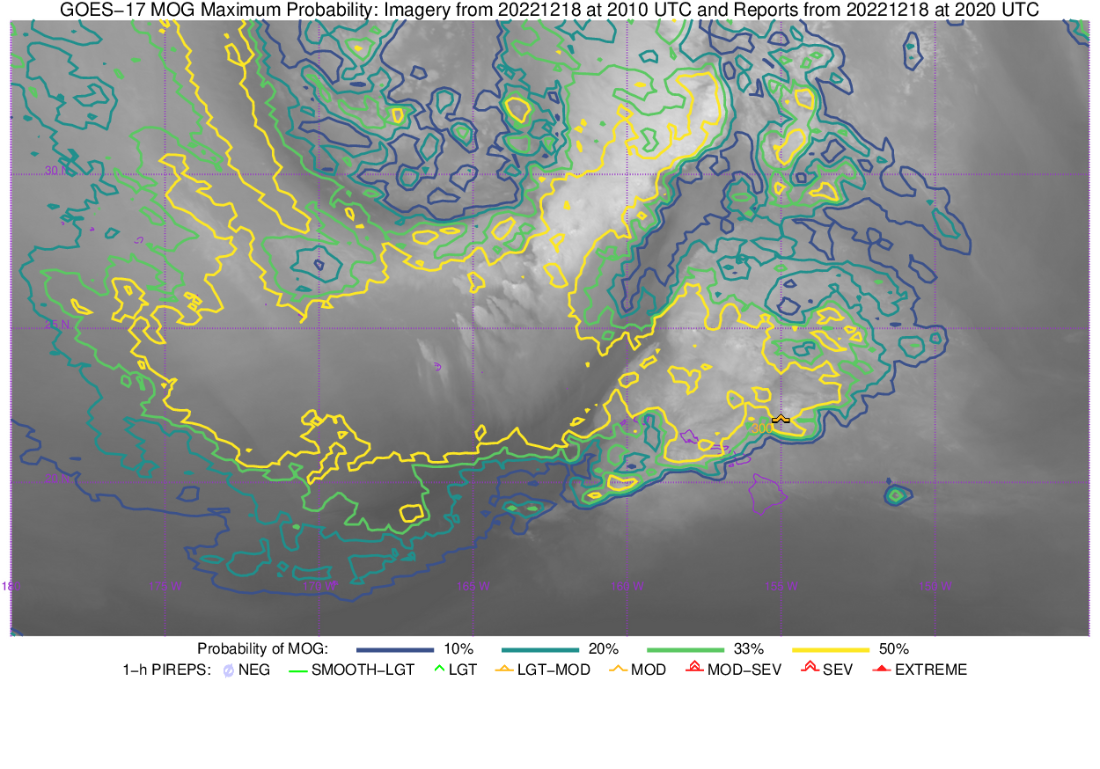
GOES-17 Upper-level Water Vapor (6.2 µm) images, with contours of Moderate Or Greater (MOG) Turbulence Probability and Pilot Report plots of turbulence [click to play animated GIF | MP4]
On 18 December 2022, Hawaiian Airlines Flight 35 (HAL 35, from Phoenix to Honolulu) encountered severe turbulence about 30 minutes prior to landing, which injured 36 passengers and crew (media report). GOES-17 (GOES-West) Upper-level Water Vapor (6.2 µm) images (above) include contours of Moderate Or Greater (MOG) Turbulence Probability and Pilot Report (PIREP) plots of turbulence (source); the severe turbulence reportedly occurred at 2016 UTC at an altitude of 36,000 feet (note: the actual HAL 35 Severe Turbulence PIREP plot for this event did not appear on the MOG Probability images).
AWIPS images of “Red” Visible (0.64 µm), Upper-level Water Vapor and “Clean” Infrared Window (10.3 µm) with MOG Turbulence Probability contours are shown below. Unfortunately, the HAL 35 PIREP of severe turbulence also did not show up in the AWIPS imagery. Thunderstorms were increasing in intensity and areal coverage north and northeast of Hawai`i during this time period — the coldest 10.3 µm cloud-top infrared brightness temperatures of those thunderstorms were generally in the -50 to -55ºC range (brighter shades of green).
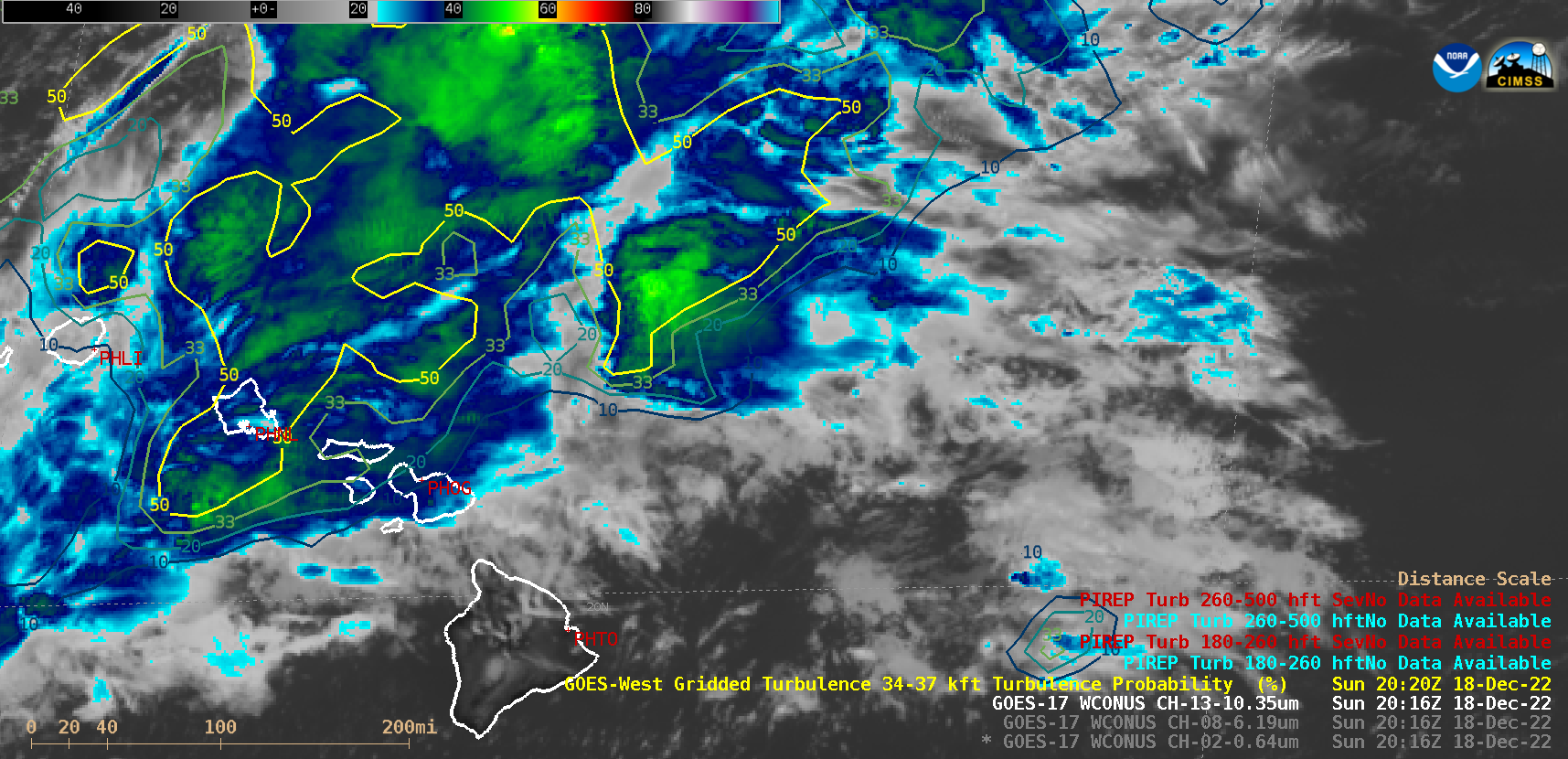
GOES-17 “Red” Visible (0.64 µm), Upper-level Water Vapor (6.2 µm) and “Clean” Infrared Window (10.3 µm) images, with contours of Moderate Or Greater (MOG) Turbulence Probability and Pilot Report plots of turbulence [click to play animated GIF | MP4]
The PIREP for this event (taken from the Preliminary Aviation FTR filed by WFO Honolulu) shows the turbulence occurred 65 nautical miles northeast of Kahului airport (OGG) on Maui:
PIREP: HNL UUA /OV OGG020065/TM 2016/FL360/TP A332/TB SEV
Visible imagery for the time of the incident is shown below.
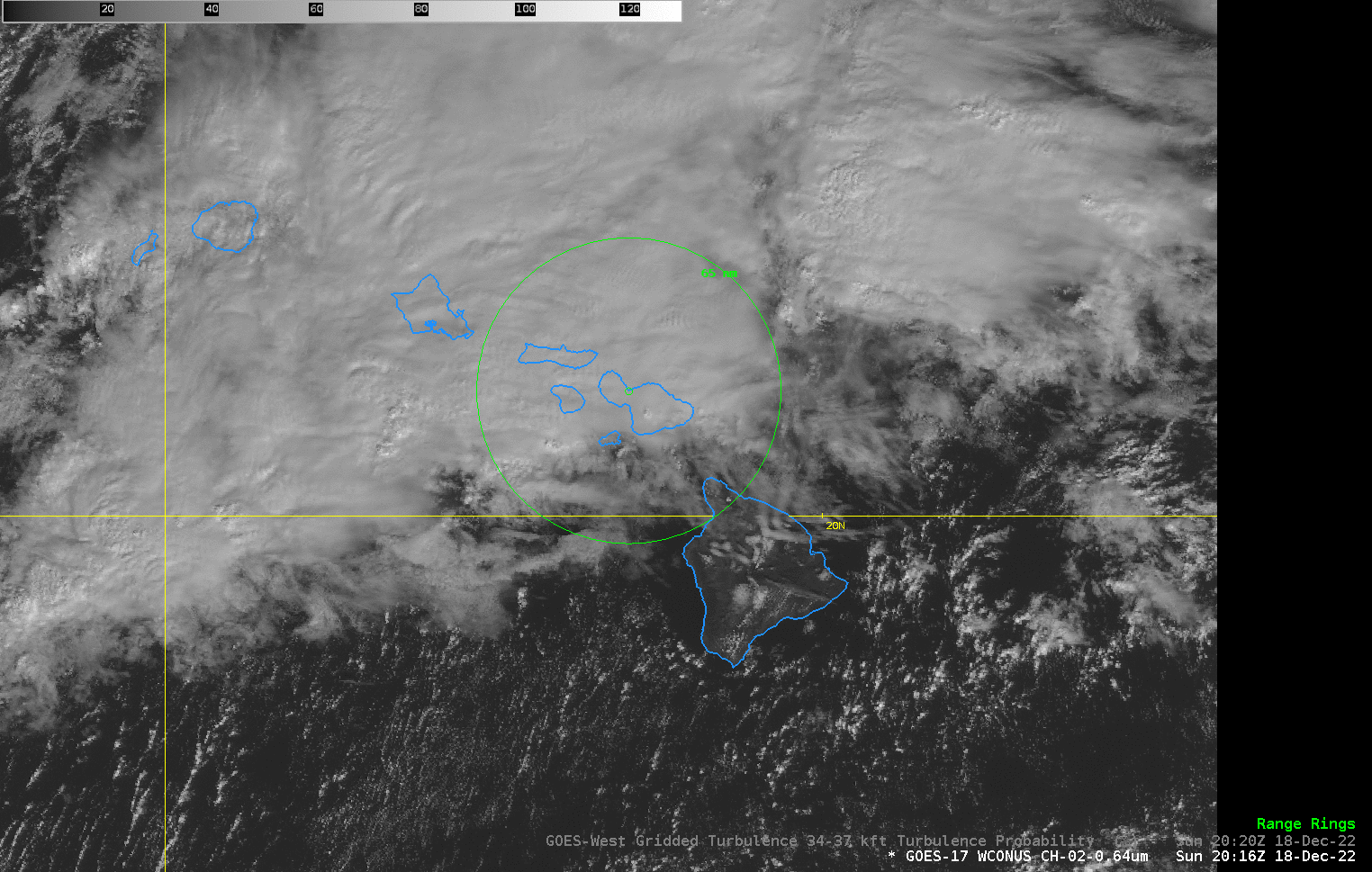
===================================
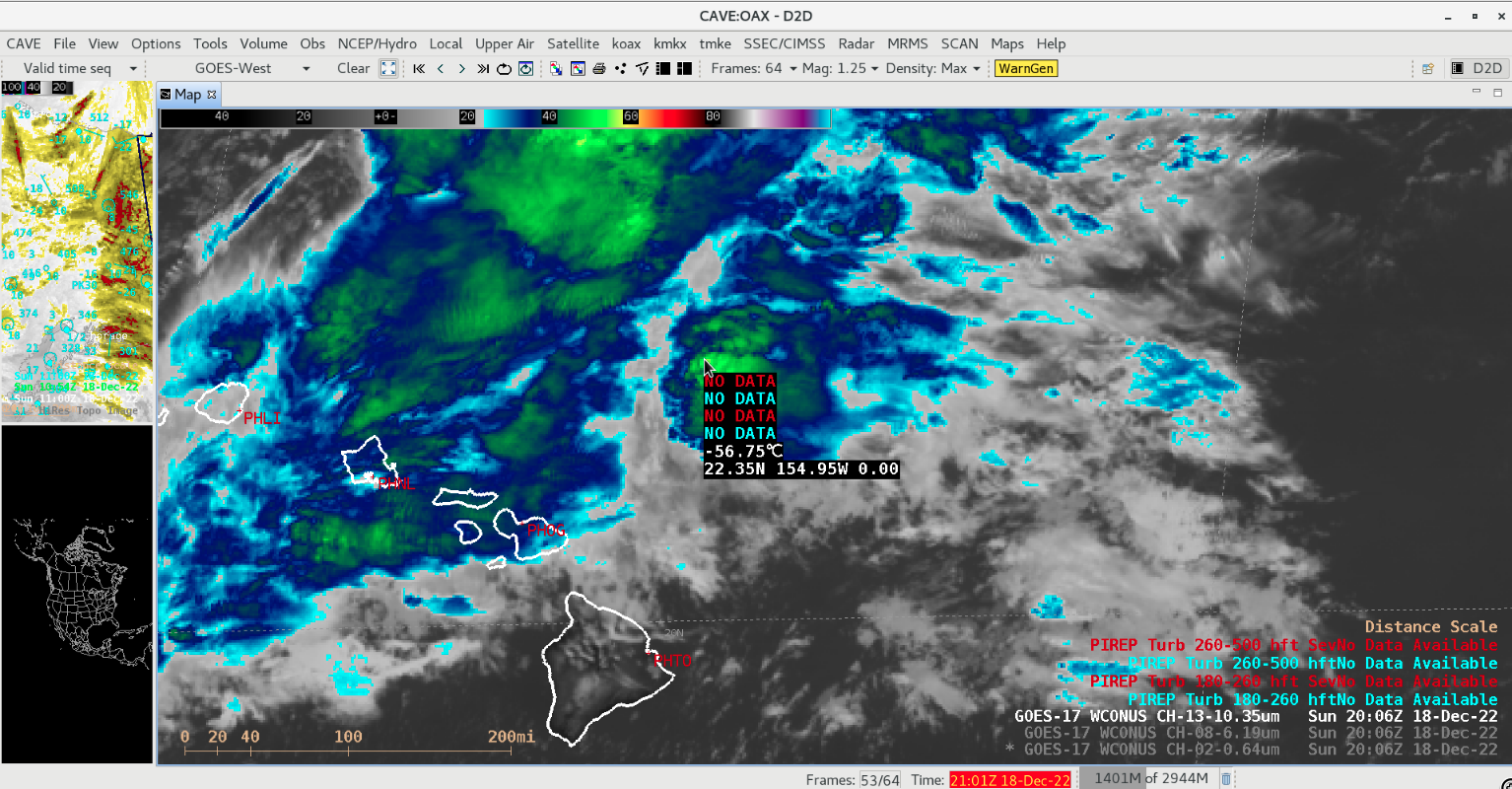
GOES-17 “Clean” Infrared Window (10.3 µm) image at 2006 UTC, with a cursor-sampled value of the cloud-top infrared brightness temperature near the turbulence encounter [click to enlarge]
Upon further interrogation of the flight log and flight path data from Flightaware.com, it appears as though the actual turbulence encounter might likely have occurred close to 20:07:32 UTC, at an altitude of 39-40,000 feet (with a rapid descent, immediately followed by rapid ascent), at latitude/longitude 22.28ºN / 154.87ºW. The aforementioned PIREP (included in the Preliminary Aviation FTR) was probably transmitted at a slightly later time and different location/altitude (which is not an uncommon occurrence, as pilots first assess the aircraft situation before sending a PIREP). The GOES-17 Infrared image at 2006 UTC (above) includes a cursor-sampled cloud-top infrared brightness temperature value of -56.75ºC near the turbulence encounter location (Note: 20:06:17 UTC was the start time of the GOES-17 PACUS (Pacific-US) sector scan — however, the satellite was actuallly scanning the area of the turbulence event at 20:07:47 UTC).
A toggle between 2006 UTC GOES-17 Visible, Water Vapor and Infrared images is shown below. Note the small overshooting top depicted in the Visible image, which was casting a shadow to its north-northwest — this thunderstorm overshooting top was located within the 50% MOG Turbulence Probability (yellow) contour.
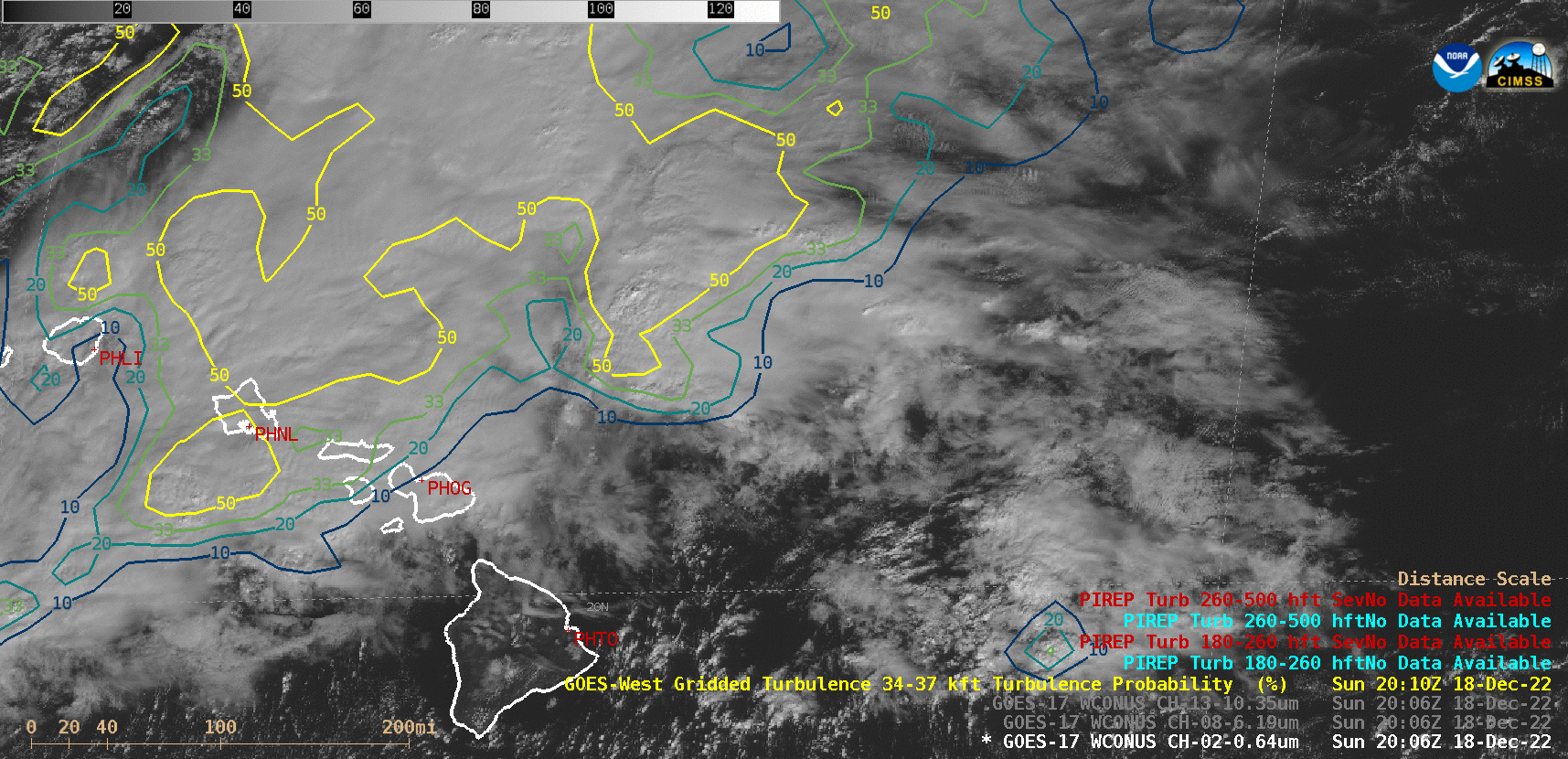
GOES-17 “Red” Visible (0.64 µm), Upper-level Water Vapor (6.2 µm) and “Clean” Infrared Window (10.3 µm) images at 2006 UTC, with contours of MOG Turbulence Probability [click to enlarge]
Plots of rawinsonde data from Lihue and Hilo, Hawai`i at 00 UTC on 19 December (below) showed that the -56.75ºC cloud-top infrared brightness temperature sampled on the 2006 UTC image roughly corresponded to an altitude of 42,000 feet — suggesting that the overshooting top of that particular thunderstorm likely reached /exceeded Hawaiian Airlines Flight 35’s cruising altitude of 40,000 feet.
In a closer view of the cluster of thunderstorms likely responsible for the severe turbulence using GOES-17 Visible and Infrared images along with the Cloud Top Height (CTH) derived product (below), maximum CTH values were around 39,530 feet (darker shades of blue).

GOES-17 “Red” Visible (0.64 µm), “Clean” Infrared Window (10.3 µm) and Cloud Top Height [click to play animated GIF | MP4]


